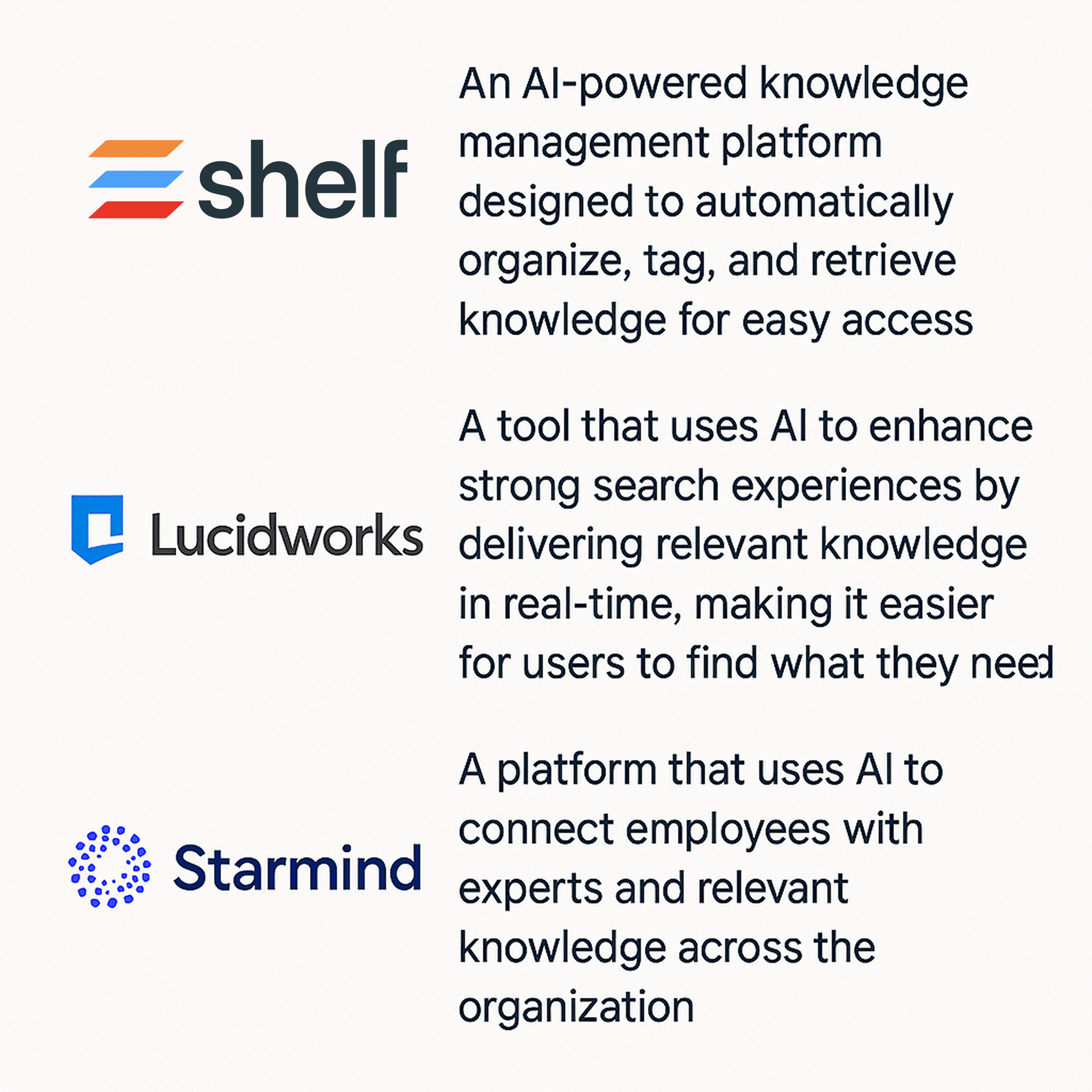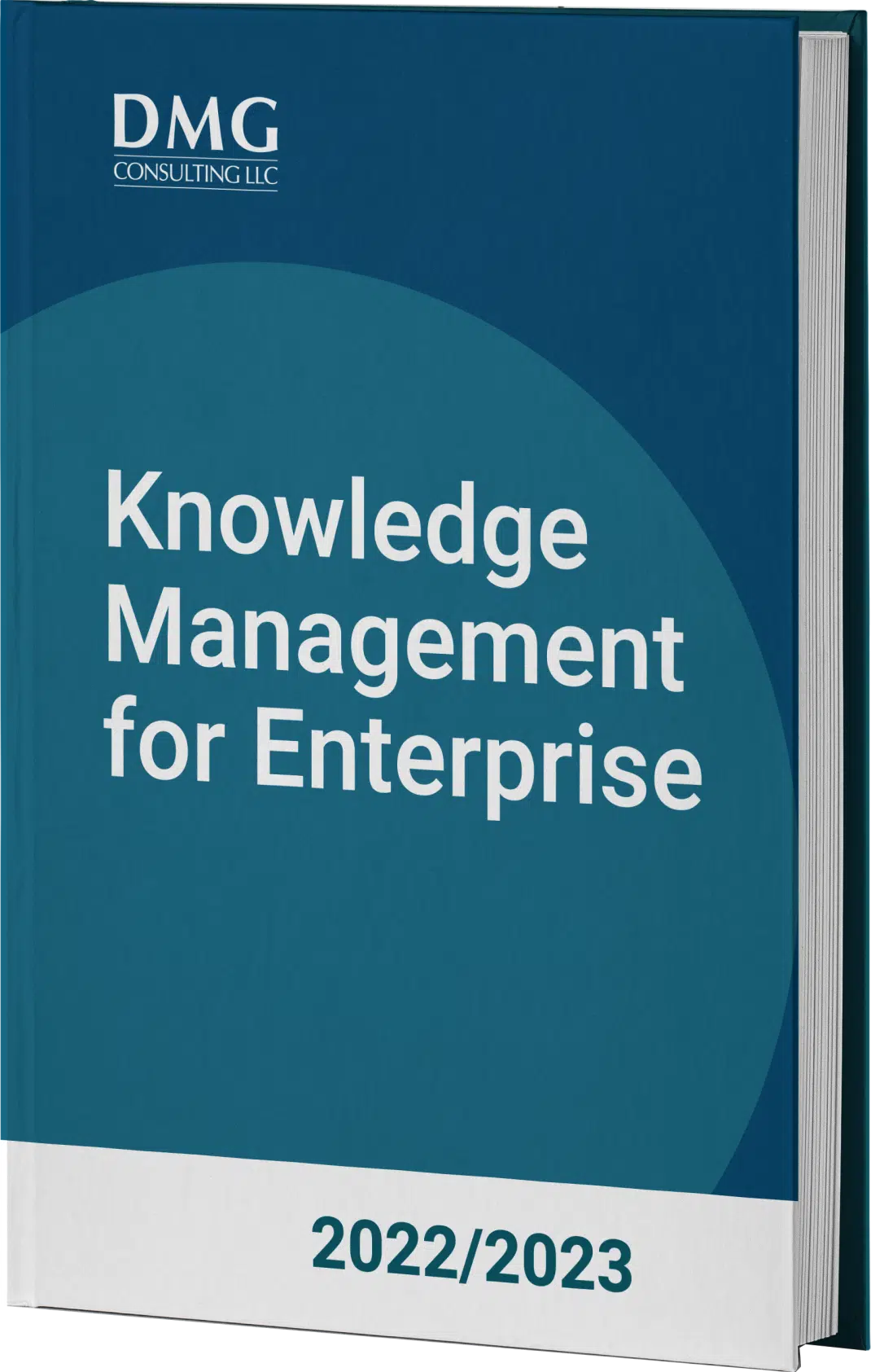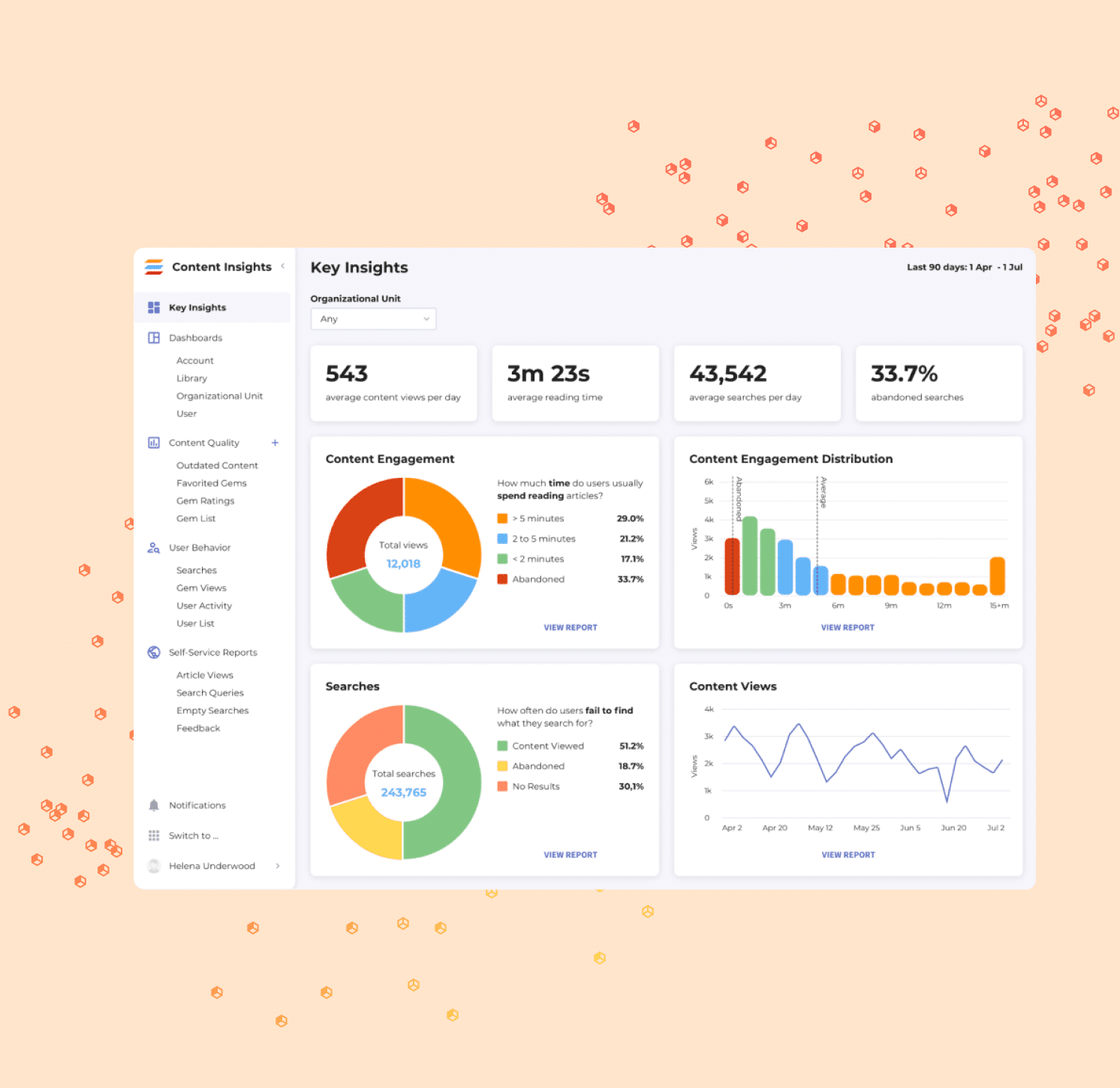Managing your entire organization’s knowledge is critical to your success. Whether you’re capturing employee expertise, organizing documents, or delivering training, knowledge management tools, platforms and softwares provide the infrastructure to keep your information accessible and up-to-date.
But which tools are right for your organization? In this article, we explore the top knowledge management (KM) tools available and how they can help you streamline processes, improve decision-making, and foster better collaboration.
What are the Top Knowledge Management Tools?
Knowledge management tools, platforms and softwares help you organize, store, and share your organization’s information. These powerful tools capture both structured and unstructured data, making it easier for your team to access and use knowledge.
Whether you need to document processes, share expertise, or create searchable archives, these tools are essential for improving productivity and decision-making.
They streamline knowledge transfer across teams, ensuring everyone has access to the information they need when they need it. By making knowledge more accessible, you reduce redundancies, speed up workflows, and foster collaboration across your organization.
Want to explore Shelf Knowledge Management Platform? Check out Gartner’s reviews of Knowledge Management Software.

The Top Knowledge Management Tools by Category in 2025
Knowledge management tools come in various forms. They are designed to serve different functions, depending on the needs of your organization. Let’s look at eight categories of the top knowledge management tools, as well as some examples and why they’re useful.
1. AI Knowledge Management Platforms
AI Knowledge Management tools leverage artificial intelligence to automate and enhance the organization, retrieval, and analysis of organizational knowledge. These tools can categorize content, automate metadata generation, provide strong search recommendations, and even assist with decision-making.
Why It’s Useful:
AI-powered knowledge management tools streamline processes by automatically organizing information and suggesting relevant content based on user queries. They improve operational efficiency by reducing the manual effort needed to manage knowledge, and they can surface insights that might otherwise be missed.
AI also plays a crucial role in enhancing search capabilities by understanding context and intent behind user queries.

Popular Tools:
Shelf – An AI-powered knowledge management platform designed to automatically organize, tag, and retrieve knowledge for easy access.
Key features:
- Automated content quality control: I appreciate that Shelf continuously monitors and flags poor content (e.g. contradictions, outdated info, duplicates). It proactively identifies the “harmful” issues that erode trust, so your knowledge stays accurate, up-to-date, and compliant at all times (Contact Center Knowledge Solution – Shelf). This built-in governance ensures employees and AI tools alike only use trusted, current information.
- Generative AI content assistance: Maintaining a large knowledge base is easier with Shelf’s authoring tools. It has intuitive features like decision tree builders and supports 100+ languages, but the game-changer is the GenAI Content Copilot. This tool uses AI to help create or update articles with one click – reducing the manual effort of authors by over 90% in some cases (Knowledge Management Solution – Shelf). The result is higher-quality documentation that keeps pace with your business.
- AI-powered search & answers: Shelf offers best-in-class findability through AI. Its GenAI-powered Search Copilot lets users ask natural questions and get precise results, while an Answer Assist engine can proactively suggest answers to agents in real time . In my experience, these intelligent search features make it much faster for teams to find the right information, exactly when they need it.
- Enterprise-grade security & reliability: Finally, Shelf was built for enterprise IT requirements. The platform offers “unmatched scalability, management, and security” out of the box – including SOC 2 Type II-certified data practices and encryption to meet strict compliance needs . It’s a cloud-native solution with a highly resilient infrastructure (historically 99.99% uptime availability) to ensure knowledge is always accessible when your team needs it . In short, Shelf is robust enough to trust with your company’s most critical knowledge assets.
- No more silos (open integrations): Shelf’s open architecture includes a semantic layer and pre-built connectors for SharePoint, Confluence, Zendesk, and many other systems. This means it can unify content from all your existing repositories – dramatically improving findability without requiring any document migrations .
- Analytics and insights: Shelf doesn’t treat knowledge as a black box – it gives rich analytics for decision-makers. Admins get transparency into what content is used (or ignored) and can build custom reports by team or channel. You can even export Shelf’s data to your own analytics stack, making it possible to tie knowledge usage to business outcomes like customer satisfaction scores or support handle time improvements .
Lucidworks – A tool that uses AI to enhance strong search experiences by delivering relevant knowledge in real-time, making it easier for users to find what they need.
Starmind – A platform that uses AI to connect employees with experts and relevant knowledge across the organization.
2. Knowledge Base
A knowledge base is a centralized repository of information that stores a wide variety of valuable knowledge, such as documents, FAQs, how-to guides, troubleshooting tips, and other resources. It is typically designed to help employees or customers quickly find answers to common questions.
Why It’s Useful:
A well-maintained centralized knowledge base reduces the need for manual support as users can access solutions independently. This self-service capability not only improves productivity but also enhances customer experience by offering immediate access to the information they need.
Popular Tools:
- Confluence – A flexible, team collaboration tool that supports knowledge sharing and project management.
- Zendesk – Known for its customer service solutions, Zendesk offers a robust knowledge base feature designed for self-service.

3. Learning Management System (LMS)
A Learning Management System is a platform used to deliver, track, and manage training programs. It allows organizations to provide structured learning content, assessments, and certifications to employees, customers, or students.
Why It’s Useful:
An LMS helps you deliver consistent training across your organization. Whether you’re onboarding new employees or offering ongoing education, an LMS ensures that everyone has access to the same learning materials. It also provides tracking and reporting capabilities so you can monitor progress and compliance.
Popular Tools:
- iSpring Learn – A supercharged learning management platform perfect for employee training and knowledge sharing.
- Moodle – An open-source LMS known for its flexibility and customization options.
- TalentLMS – A cloud-based LMS designed for businesses of all sizes, offering easy content creation and management.
- Docebo – An AI-powered LMS that focuses on delivering personalized learning experiences and improving learner engagement.
4. Document Management Software
Document Management Software helps you store, organize, and track digital documents. It provides a secure and searchable system for managing files. This makes it easier to maintain version control, ensure compliance, and streamline document workflows.
Why It’s Useful:
This software is essential for businesses handling a large volume of documents. It ensures that important documents are not lost, misplaced, or duplicated. Document management systems often include advanced features like access control, audit trails, and collaboration tools to keep your data secure and compliant.
Popular Tools:
- DocuWare – A cloud-based document management solution that helps automate workflows and secure document storage.
- M-Files – A solution that organizes documents based on their content rather than where they are stored, making information easier to find.
- eFileCabinet – A document management tool designed to automate document filing and retrieval processes, with secure cloud storage.
5. Content Management System (CMS)
A Content Management System is a software platform that allows you to create, edit, manage, and publish digital content types. It’s commonly used for managing websites, blogs, and other online content. It enables users with little technical expertise to maintain and update a site.
Why It’s Useful:
A content organization platform simplifies content creation and publishing so you can keep your website and internal knowledge hubs up to date. It provides a user-friendly interface for managing various types of content, such as knowledge base articles, videos, and images. This is essential for organizations that need to frequently update content or maintain a resource-rich website.
Popular Tools:
- WordPress – One of the most popular CMS platforms, known for its flexibility, ease of use, and wide range of plugins.
- Drupal – A highly customizable content organization system favored by larger organizations for its scalability and security features.
- Joomla – A flexible content organization system platform that supports multiple languages and is suitable for complex websites.
6. Project Management Software
Flexible Project Management Software is designed to help teams plan, execute, and track their work. It often includes robust features for task management, scheduling, resource allocation, and team collaboration. While primarily used for project tracking, it can also serve as a central knowledge hub for project-related information.
Why It’s Useful:
Project management software ensures that your team stays organized and on track with their goals. These tools allow you to document processes, share files, and track progress across various projects, serving as a centralized place to store knowledge related to specific initiatives. It’s especially useful for teams that need to collaborate across departments or manage complex, multi-step projects.
Popular Tools:
- Asana – A popular project management tool that allows teams to organize tasks, share project details, and collaborate in one platform.
- Trello – A simple, visual project management tool that helps teams organize tasks using boards, lists, and cards.
- Monday.com – A flexible work operating system that helps teams collaborate, track projects, and manage tasks efficiently.
7. Decision Support Software (DDS)
Decision Support Software is a tool designed to assist in decision-making processes by analyzing large volumes of data and presenting actionable insights. It often integrates with other business systems to gather and analyze data. It typically offers dashboards, reporting tools, and predictive analytics to help decision-makers evaluate different scenarios.
Why It’s Useful:
DSS helps you make informed decisions by providing real-time data analysis and simulations. It’s particularly beneficial in complex decision-making scenarios. DSS enables you to assess risks, forecast outcomes, and compare options, leading to more strategic and confident decision-making.
Popular Tools:
- Domo – A cloud-based business intelligence platform that helps organizations visualize data and make real-time decisions.
- Qlik – A decision support tool that offers data visualization and analytics to help teams uncover valuable insights from their data.
- Tableau – A widely used data visualization tool that turns complex data into easy-to-understand actionable insights, aiding decision-making.
8. Knowledge Management Platforms
Knowledge Management Platforms are comprehensive systems designed to capture, organize, and distribute an organization’s knowledge. These single platforms often combine multiple tools, such as a central repository of data (such as a knowledge base), document management, and collaboration features, into a single, unified solution. They offer a centralized repository where all types of organizational knowledge can be stored and accessed by employees.
Why It’s Useful:
A knowledge management software is essential for organizations looking to streamline the capture and sharing of both explicit and tacit knowledge. It provides a single source of truth where employees can quickly find the information they need, ensuring that knowledge is not siloed. These platforms also enhance collaboration, allowing teams to share expertise and insights more effectively.
Popular Tools:
- Bloomfire – A knowledge management platform that centralizes knowledge and makes it searchable, ensuring easy access to company information.
- Microsoft SharePoint – A popular platform used to manage and share content, knowledge, and applications across organizations.
- Guru – An AI-powered knowledge management platform that ensures teams can easily capture and retrieve knowledge from anywhere.
Why Knowledge Management Tools Matter in 2025
Modern Knowledge Management software helps organisations unlock, retain and scale internal expertise. Here’s how the right Knowledge Management platform delivers value:
- Break Down Silos and Boost Collaboration
Centralised platforms break down information silos. Teams can co-create, share and update knowledge in real time — reducing duplication and surfacing insights faster. - Faster Decision Making
When knowledge is organised and accessible your team makes better decisions based on real world experience and documented best practice. - Maximise Productivity
With search and structured content Knowledge Management tools reduce time spent searching for information — so teams can focus on what matters. - Preserve Institutional Knowledge
Employees may leave but their knowledge doesn’t have to. A good Knowledge Management platform captures and stores critical knowledge for long term use. - Prevent Duplicated Work
When everyone works from a single source of truth duplicated work disappears — saving time and resources. - Faster Onboarding
Give new hires everything they need from day one. With a centralised knowledge hub onboarding time is dramatically reduced. - Compliance and Reduce Risk
In regulated industries Knowledge Management tools ensure documentation is properly managed — reducing the risk of audits or legal missteps.
Key Features to Look for in the Top Knowledge Management Software
When choosing a knowledge management tool, you need features that enhance your team’s ability to access, share, and manage information efficiently. The right features help streamline operations, improve collaboration, and ensure compliance. Below are key features to consider:
Strong Search Capabilities
You need powerful search functionality to quickly find relevant knowledge. A tool with a robust search engine enables you to locate specific documents, keywords, or topics, even from large volumes of data. Advanced search filters and indexing are crucial for speeding up knowledge retrieval.
Third Party Integration Tools
Your knowledge management software tool should come with seamless integration with other third-party tools that your organization uses. Third-party integration tools allow you to connect your knowledge base with project management platforms, communication tools, and CRMs.
Collaboration Tools
Effective collaborative features allow teams to work together in real-time, share feedback, and co-author documents. Look for tools that include version control, commenting, and team workspaces to encourage smoother communication and collective knowledge sharing.
Content Authoring and Editing
Creating and updating knowledge should be easy. Tools with content authoring and editing features give your team the ability to create, modify, and publish content directly within the system. Rich text editors, templates, and formatting options enhance collaboration among team members and help you keep information organized and consistent.
Self-Service Capabilities
Self-service capabilities empower users to find answers independently without needing to contact support or other teams. A good knowledge management tool will offer searchable FAQs, guides, and tutorials to allow users to solve problems on their own.
AI-Powered
Generative AI features improve the operational efficiency of your knowledge management. With AI, you can automate tasks such as categorizing content, generating metadata, and even providing intelligent recommendations. These features help reduce manual efforts and ensure your knowledge base stays updated.
Shelf next-generation generative AI knowledge management system helps you create content faster and keep it up-to-date more efficiently and effectively than ever before.
Compliance-Driven Knowledge
Compliance features ensure your knowledge management software tool adheres to industry regulations and standards. Whether it’s managing audit trails, data retention policies, or document versioning, a compliance-driven tool helps you reduce risks and maintain regulatory standards.
Intuitive Guidance
A knowledge management tool should offer intuitive guidance that helps users navigate the platform easily. This includes user-friendly interfaces, easy-to-follow workflows, and in-app help options to guide users through the process of finding and managing information. Products that require minimal training time will make user adoption much easier.
Analytics and Reporting
You need to measure how your knowledge is being used. Analytics and reporting features give you insights into how often content is accessed, which topics are most viewed, and where knowledge gaps may exist. This helps you continually improve the quality and relevance of your content.
Notifications
Notifications keep your team informed about updates or changes to knowledge content. Whether it’s an updated policy or a new guide, notifications ensure everyone stays up to date with the latest information.
KCS Verified
Knowledge-Centered Service (KCS) is a set of best practices for knowledge management. Choosing a tool that is KCS Verified ensures it follows industry standards for knowledge creation, management, and reuse, giving you confidence that your system supports continuous learning and improvement.
Content Approval Workflow
Your tool should include an approval workflow to ensure the accuracy and quality of information before it’s published. Approval workflows for pieces of content help maintain consistency and prevent incorrect or incomplete knowledge from being shared.
Customizable Templates
Customizable templates help standardize the way your content is presented. You can create pre-built formats for different types of documents, ensuring consistency in style, structure, and branding across all your knowledge assets.
Use the Top Knowledge Management Tools for Better Results
Knowledge management solutions ensure that your organization’s valuable information is easily accessible, organized, and actionable. By leveraging the right type of tool—whether its knowledge bases, AI-driven system, or a full-scale platform—you can enhance collaboration, streamline decision-making, and retain critical knowledge.
Choosing the right combination of tools for your knowledge management strategy will empower your team to work more efficiently, share knowledge seamlessly, and ultimately drive better results for your organization.




